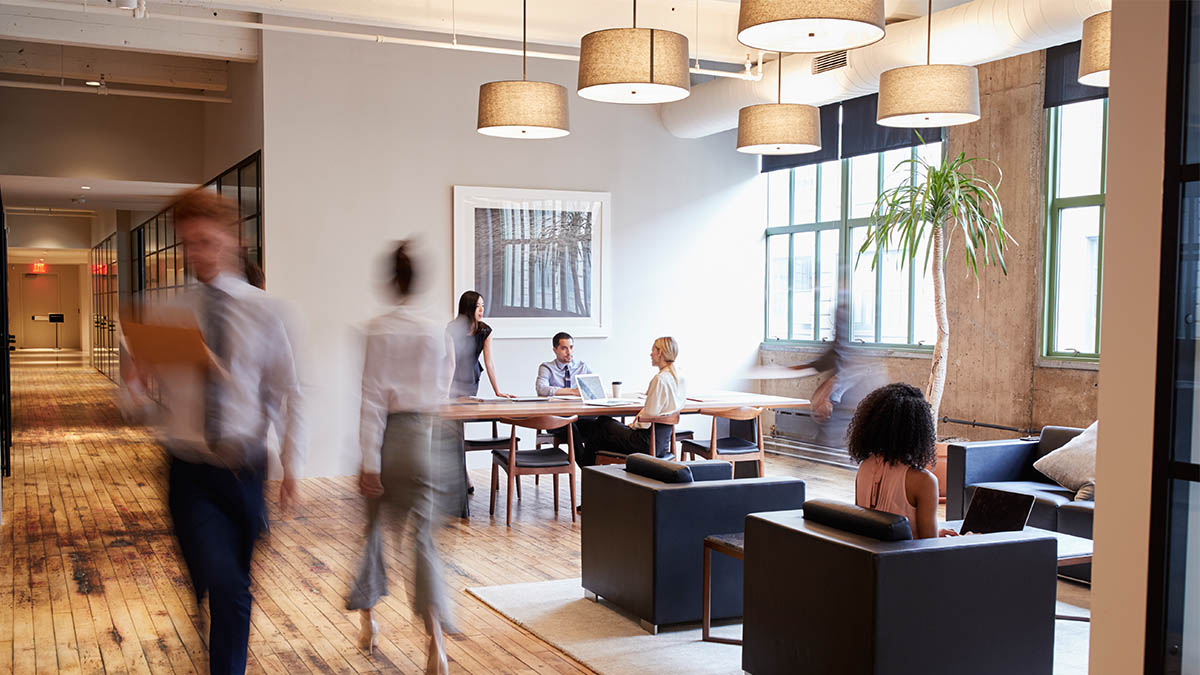Within the complex tapestry of elements shaping the contemporary workplace, the interplay of office design, employee creativity, and productivity stands out as a nuanced yet pivotal force. The configuration, color palettes, and atmosphere within our workspaces exert a substantial influence on our cognitive faculties and, consequently, our work performance. Far from a random facet of corporate dynamics, this realm is meticulously examined within the realm of workplace psychology. Choosing the best office space is significant, but nurturing a positive office culture is equally vital. In this comprehensive analysis, we delve into the profound impact of office design on our professional mindset, offering strategic insights for purposeful and productivity-driven spatial arrangements.
Understanding the Psychological Impact
Before the first beam or color swatch is chosen, thoughtful consideration of how design elements translate into mental effects is paramount. The business space for lease/office space is more than a utilitarian vessel; it’s an extension of the corporate ethos that should resonate with its occupants on a primal, psychological level.
Influence of Colors and Lighting on Mental State
The mere presence of color has been shown to evoke emotion, with warmer tones instigating a sense of energy and cooler hues promoting calmness. The task, hence, is to orchestrate a symphony of shades that harmonize with the desired work mood. Lighting is a complementary conductor, with natural light heralded as the maestro of employee well-being, and artificial lighting as its versatile sidekick, capable of setting the stage for focus or relaxation.
Ergonomics and Employee Well-being
Ergonomics transcends trendy office chairs with quirky designs; it’s about crafting a space where the human body can engage with its tools and environment as efficiently and comfortably as possible. From adjustable desks to wrist-friendly mice, ergonomic considerations mirror a company’s commitment to its employees’ long-term health and, by extension, productivity.
Fostering Creativity in Office Spaces
Creativity is often a collective endeavor, and as such, the office should be a canvas for collaboration and innovation. But how does one translate architectural plans into conducive settings for the gestation of fresh ideas?
Incorporating Open Spaces for Collaboration
The era of cubicle farms is waning, giving way to open-concept layouts that physically dismantle the barriers to communication and creativity. Strategic placement of workstations and communal areas can galvanize impromptu interactions and cross-pollination of thought.
Designing Breakout Areas for Brainstorming
An office devoid of designated spaces for unharnessing the mind is a creative well running dry. By weaving breakout areas into the office fabric — think cozy nooks, casual meeting spots, and even game rooms — employees are liberated from the constraints of their desks and invited to explore and ideate. Bonding over a game of table tennis or hashing out solutions in an informal setting encourages camaraderie and often unearths novel approaches to work.
Boosting Productivity Through Design
Productivity thrives in the presence of clarity and efficiency, and these attributes should be etched into every square foot of the workplace. But how can design bring about a sense of flow, and what are the pitfalls that threaten to stifle it?
Organizing Workstations for Focus and Efficiency
The mantra here is order. Clutter isn’t just a physical obstacle; it’s a cognitive one. Hence, furniture that aids organization, layouts that minimize distractions, and partitions that offer a semblance of privacy while not casting a feeling of exclusion are the cornerstones. This isn’t to say that all individuality should be stripped away; employees should have the autonomy to inject their personalities into their spaces but within the confines of an organized framework.
Utilizing Technology for Streamlined Workflows
The tools we use shape the way we work. By seamlessly integrating technology into the office design — from smart whiteboards in conference rooms to wireless charging stations in the breakout areas — we set the stage for workflows that ebb without obstruction. The cherry on top? An aesthetically pleasing tech-savvy workspace that’s bound to impress clients and employees alike.
Practical Tips for Office Design When Choosing The Best Office Space
When it’s time to translate theory into practice, a palette of practical tips will guide the way forward. Flexibility should be the keynote here, allowing for an infrastructure that grows and adapts with the company and its employees. Some areas to focus on include:
- Bring in natural elements: Plants, large windows, and even water features can connect employees with nature and unleash their creativity.
- Embrace a vibrant color palette: Bold colors have the power to energize and stimulate, but be mindful of balance and contrast.
- Invest in quality materials: Durable desks, ergonomic chairs, and noise-canceling partitions are investments in employee well-being and productivity that will pay dividends.
- Seek feedback: Regularly survey employees to gauge the effectiveness of the office design and elicit suggestions for areas of improvement.
Conclusion
The story of office design is not a tale of aesthetics detached from reality and not just confined to business space for lease, but an intricate weave of psychological triggers with tangible effects on our creativity and productivity. By leveraging this understanding, we hold the key to crafting environments that nurture the cognitive seeds of our employees, leading to bountiful harvests of innovation and efficiency. In the saga of office spaces, the finale is a never-ending crescendo of inspired work. And for those seeking a stage to house such symphonies, Mireka Tower stands tall as the epitome of a ‘Good Office’ culture, where every detail sings in tune with the psychology of excellence.
